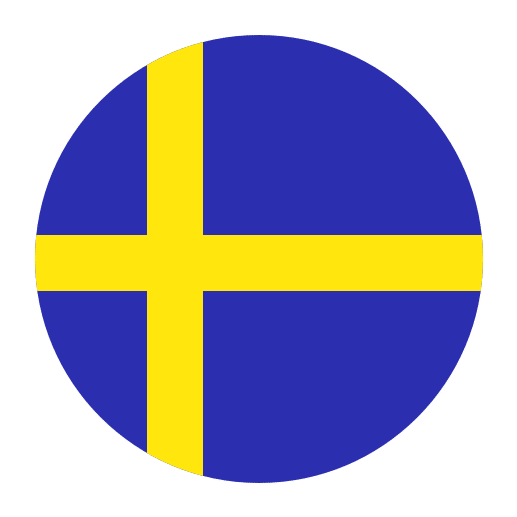Learning a new language can be a rewarding but challenging endeavor. Swedish, with its melodic tones and rich cultural heritage, is a language that many learners find intriguing. However, like any language, mastering Swedish requires dedication, practice, and effective learning strategies. One such powerful strategy is the use of mind maps. Mind maps are visual tools that can help you organize information, enhance memory, and foster a deeper understanding of the language. In this article, we will explore how to use mind maps to learn Swedish effectively.
What Are Mind Maps?
Mind maps are diagrams that represent ideas and concepts in a visual format. They typically start with a central idea, which branches out into related subtopics and details. This method capitalizes on the brain’s natural ability to recognize and process patterns, colors, and images. By using mind maps, you can break down complex information into manageable chunks, making it easier to understand and remember.
Benefits of Using Mind Maps for Language Learning
1. Enhanced Memory Retention: The visual nature of mind maps helps reinforce memory by engaging different parts of the brain. Colors, images, and spatial organization make the information more memorable.
2. Better Organization: Mind maps provide a clear structure, allowing you to see the connections between different language elements. This helps in organizing vocabulary, grammar rules, and cultural insights.
3. Increased Creativity: Creating mind maps encourages creative thinking and helps you make associations between different concepts. This can be particularly useful when learning idiomatic expressions or cultural nuances.
4. Improved Focus: The process of drawing and organizing a mind map requires concentration, which helps in maintaining focus during study sessions.
Getting Started with Mind Maps
Creating a mind map for learning Swedish involves a few simple steps. Here’s a guide to help you get started:
1. Choose a Central Theme: Start with a central theme or topic. This could be a broad category like “Swedish Vocabulary,” “Grammar Rules,” or “Cultural Insights.”
2. Add Branches: From the central theme, draw branches that represent subtopics. For instance, if your central theme is “Swedish Vocabulary,” your branches could include “Food,” “Travel,” “Numbers,” and “Greetings.”
3. Expand Subtopics: Each branch can further expand into more detailed subtopics. For example, under “Food,” you could have branches for “Fruits,” “Vegetables,” “Meals,” and “Drinks.”
4. Use Colors and Images: Incorporate colors, symbols, and images to make your mind map visually appealing and memorable. Different colors can represent different types of information, such as nouns, verbs, adjectives, etc.
5. Keep It Simple: While it’s tempting to add lots of details, try to keep your mind maps simple and uncluttered. Focus on key concepts and main ideas to avoid overwhelming yourself.
Using Mind Maps for Specific Language Aspects
Mind maps can be tailored to different aspects of language learning, such as vocabulary, grammar, pronunciation, and cultural knowledge. Here are some examples of how you can use mind maps for each aspect:
Vocabulary
Learning vocabulary is a fundamental part of language acquisition. Mind maps can help you categorize and visualize new words, making them easier to remember.
Example: Create a mind map for “Swedish Vocabulary.” Under this central theme, add branches for different categories such as “Family,” “Clothing,” “Weather,” and “Emotions.” For each category, list relevant vocabulary words along with their translations and any associated images.
Tips:
– Use different colors for different categories to make the mind map more visually distinct.
– Include example sentences or phrases to see the words in context.
– Draw small illustrations or find images online to associate with each word.
Grammar
Swedish grammar has its own set of rules and structures that can be quite different from English. Mind maps can help you organize these rules and see the connections between them.
Example: Create a mind map for “Swedish Grammar.” Include branches for “Nouns,” “Verbs,” “Adjectives,” “Pronouns,” and “Sentence Structure.” Under each branch, add subtopics like “Gender of Nouns,” “Verb Conjugation,” “Adjective Agreement,” etc.
Tips:
– Use diagrams to illustrate sentence structures and word order.
– Highlight exceptions and irregularities in different colors.
– Include examples to clarify complex rules.
Pronunciation
Swedish pronunciation can be tricky for English speakers due to its unique sounds and intonation patterns. Mind maps can help you break down these elements and practice them systematically.
Example: Create a mind map for “Swedish Pronunciation.” Add branches for “Vowels,” “Consonants,” “Stress Patterns,” and “Intonation.” Under each branch, list specific sounds and their phonetic symbols, along with examples and audio recordings if possible.
Tips:
– Use color coding to differentiate between different types of sounds.
– Include mouth diagrams to show tongue and lip positions for different sounds.
– Practice regularly with audio recordings to reinforce correct pronunciation.
Cultural Insights
Understanding the culture behind a language is crucial for effective communication. Mind maps can help you explore different cultural aspects and their linguistic implications.
Example: Create a mind map for “Swedish Culture.” Include branches for “Traditions,” “Holidays,” “Cuisine,” “Social Etiquette,” and “History.” Under each branch, add relevant details and vocabulary.
Tips:
– Use images and symbols to represent different cultural elements.
– Include key phrases and expressions used in specific cultural contexts.
– Explore cultural connections between Sweden and other countries.
Practical Applications of Mind Maps
Mind maps are versatile tools that can be applied in various practical scenarios to enhance your Swedish learning experience. Here are some practical applications of mind maps:
Daily Vocabulary Practice
Create a mind map for daily vocabulary practice. Start with a central theme like “Daily Activities” and add branches for different activities you do throughout the day, such as “Morning Routine,” “Work,” “Leisure,” and “Evening Routine.” Under each branch, list relevant vocabulary words and phrases.
Language Immersion
Use mind maps to plan and organize language immersion activities. Create a mind map for “Language Immersion” and include branches for different activities like “Watching Swedish Movies,” “Listening to Swedish Music,” “Reading Swedish Books,” and “Conversing with Native Speakers.” Under each branch, list specific resources and strategies.
Exam Preparation
If you’re preparing for a Swedish language exam, use mind maps to organize your study materials. Create a mind map for “Exam Preparation” and include branches for different sections of the exam, such as “Listening,” “Reading,” “Writing,” and “Speaking.” Under each branch, add subtopics like “Practice Tests,” “Grammar Review,” and “Vocabulary Lists.”
Travel Planning
If you’re planning a trip to Sweden, use mind maps to organize your travel plans and language needs. Create a mind map for “Travel Planning” and include branches for different aspects of your trip, such as “Accommodation,” “Transportation,” “Sightseeing,” and “Dining.” Under each branch, list relevant vocabulary, phrases, and practical tips.
Tools and Resources for Creating Mind Maps
There are several tools and resources available to help you create mind maps for learning Swedish. Here are some popular options:
1. Pen and Paper: Sometimes the simplest tools are the most effective. You can create mind maps using colored pens and paper. This method allows for creativity and personalization.
2. Digital Mind Mapping Software: There are various digital tools available for creating mind maps, such as MindMeister, XMind, and Coggle. These tools offer features like collaboration, cloud storage, and integration with other apps.
3. Mobile Apps: If you prefer using your smartphone or tablet, there are several mind mapping apps available, such as SimpleMind, iThoughts, and MindNode. These apps offer portability and convenience.
4. Online Templates: Many websites offer free mind map templates that you can customize for your language learning needs. These templates can save you time and provide inspiration.
Conclusion
Mind maps are powerful tools that can enhance your Swedish language learning experience. By organizing information visually, you can improve memory retention, foster creativity, and maintain focus. Whether you’re learning vocabulary, grammar, pronunciation, or cultural insights, mind maps can help you break down complex information and see the connections between different language elements. With practice and creativity, you can use mind maps to make your Swedish learning journey more enjoyable and effective. So grab your pens, colors, and digital tools, and start mind mapping your way to Swedish fluency!

